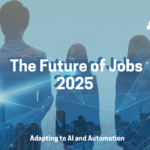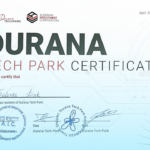Shaping HR in 2025: Key Trends and Strategic Priorities
As businesses brace for 2025, HR leaders are facing a rapidly evolving landscape that demands strategic foresight and adaptability. According to Gartner, a global research and advisory firm specializing in business strategy, has identified these five HR priorities will shape the workplace in 2025, urging organizations to rethink their approach to leadership, culture, and workforce planning.
Leader and Manager Development
The role of managers is becoming increasingly complex, with 75% of them feeling overwhelmed by expanding responsibilities. Traditional leadership programs are failing, with 70% missing the mark on real-world application. In 2025, organizations must prioritize leadership development that is practical, experience-driven, and adaptable to the dynamic nature of the workplace. Instead of generic training sessions, businesses should implement real-time coaching, mentorship programs, and experiential learning opportunities to equip leaders with the necessary skills to thrive.
Organizational Culture
Culture has long been a buzzword in corporate environments, but the challenge lies in its execution. Over half of HR leaders report that managers are not reinforcing company culture in day-to-day operations. To bridge this gap, organizations must clearly define their cultural values and ensure they are consistently integrated into business practices. This means holding leaders accountable, embedding cultural expectations in performance reviews, and creating a work environment where employees feel genuinely connected to their company’s mission and values.
Change Management
With 73% of employees experiencing change fatigue, organizations must rethink how they manage transitions. Whether it’s digital transformation, restructuring, or evolving business strategies, leaders must be equipped to guide teams through change effectively. Instead of overwhelming employees with constant shifts, businesses should prioritize transparent communication, phased transitions, and employee well-being to ensure smoother adaptation to new processes and structures.
HR Technology: Investing in What Works
HR technology is supposed to streamline processes, yet over half of HR leaders admit that their current systems fail to meet their needs. Even more concerning, many organizations struggle to measure the return on investment of their HR tech. In 2025, companies need to move beyond outdated and clunky systems, investing in user-friendly, AI-driven solutions that enhance efficiency and improve employee experience. From AI-powered recruitment tools to automated onboarding and performance management platforms, technology should empower HR teams rather than burden them.
The Road Ahead
The HR landscape in 2025 will demand a proactive and strategic approach. Organizations that invest in strong leadership, reinforce their culture, embrace workforce planning, prioritize effective change management, and optimize HR technology will be better positioned to succeed. As the workforce continues to evolve, businesses must stay agile and forward-thinking, ensuring they create environments where employees and leaders alike can thrive.

